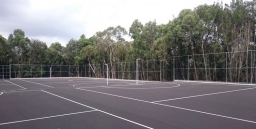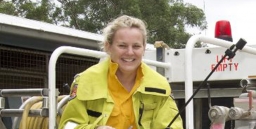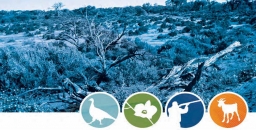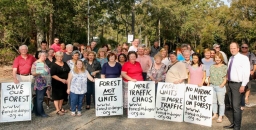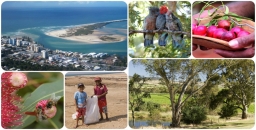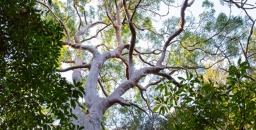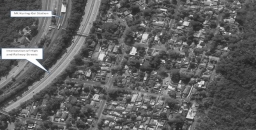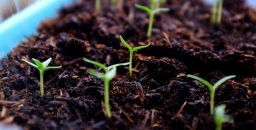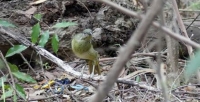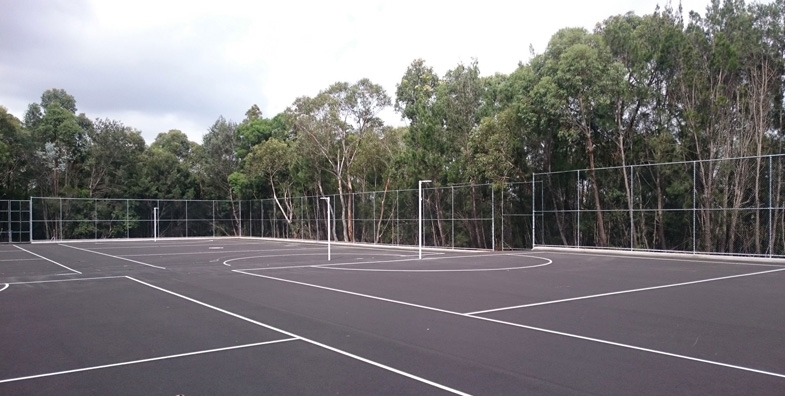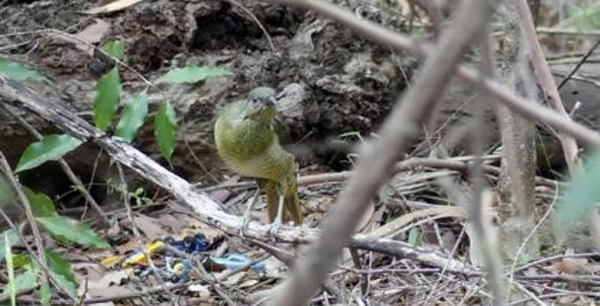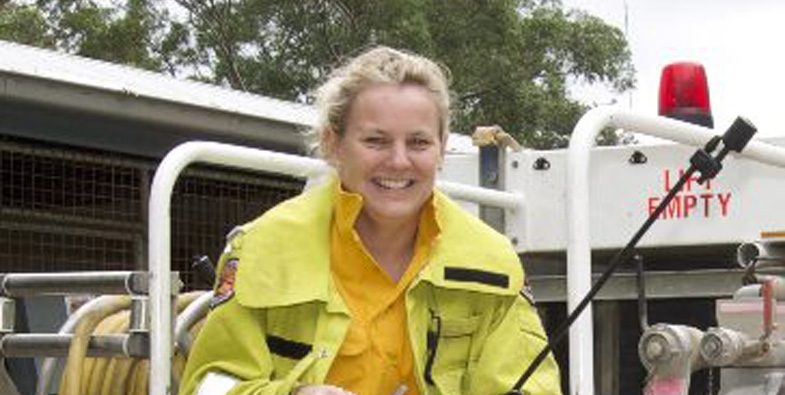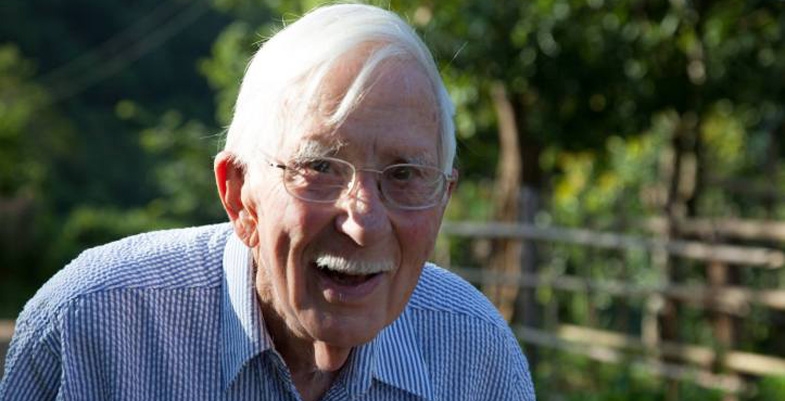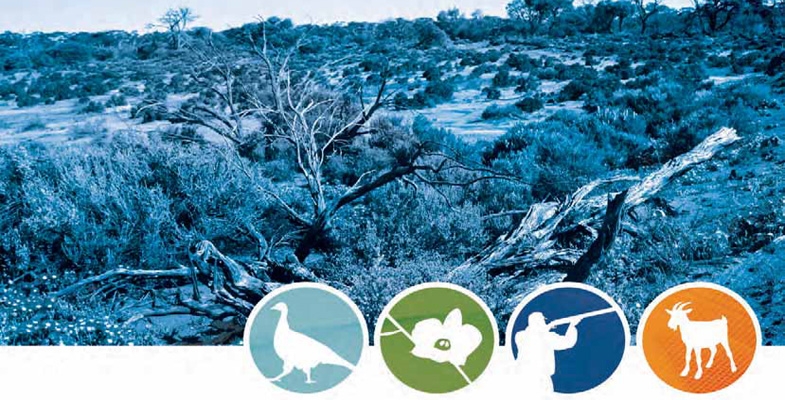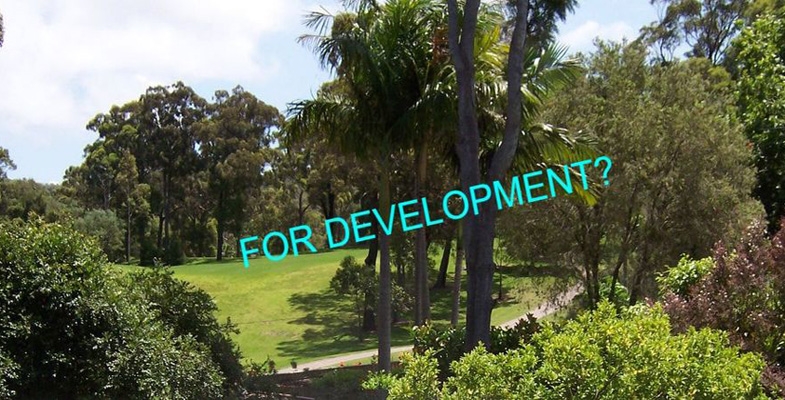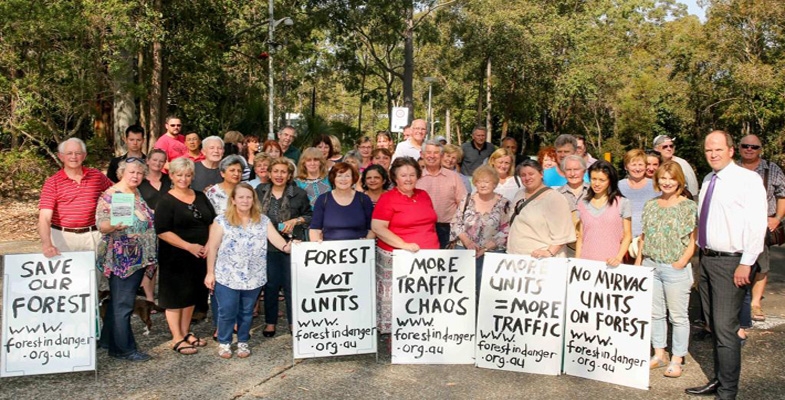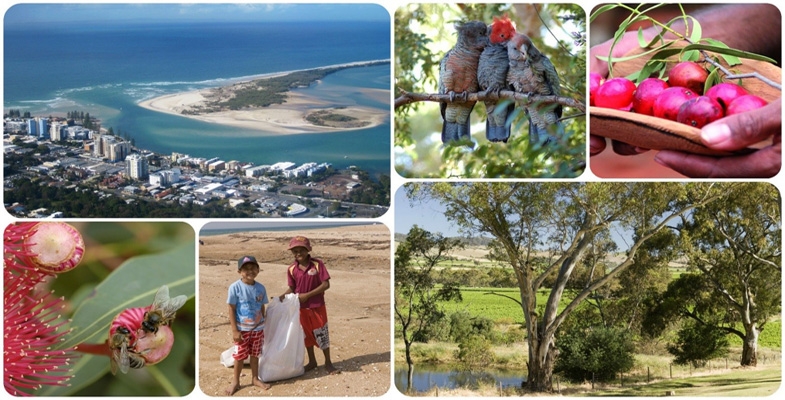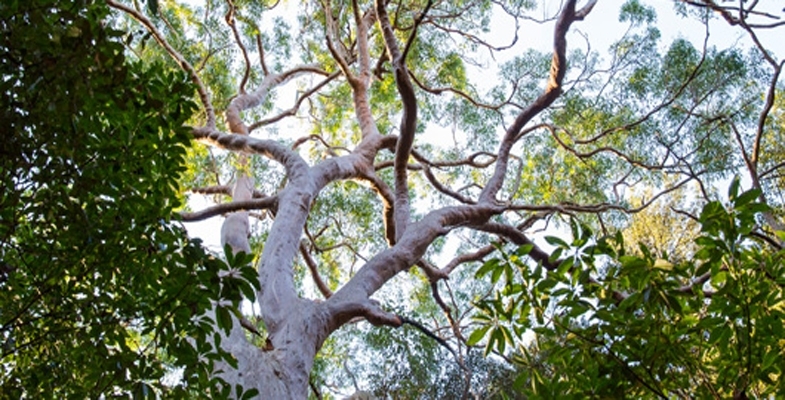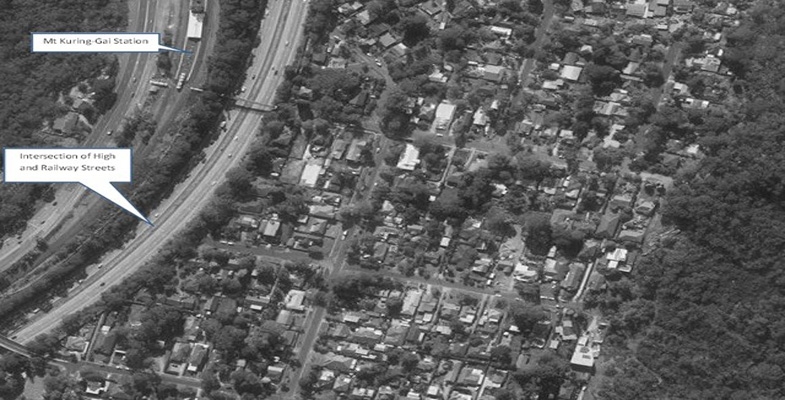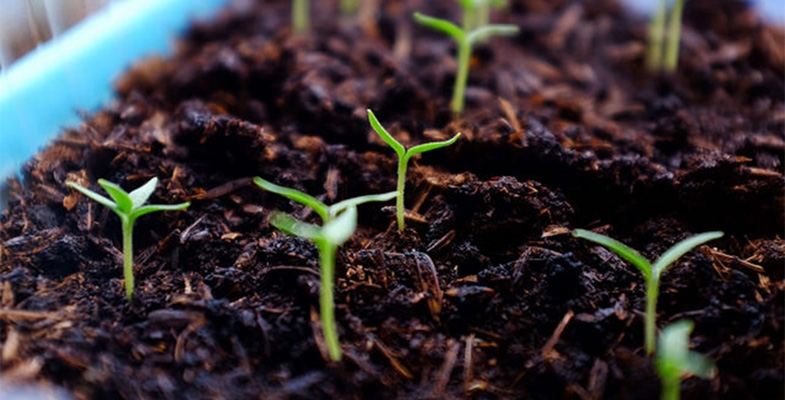STEP Matters 194
- Default
- Title
- Date
- Random
- Our plans to celebrate STEP’s 40th anniversary will be announced later this year. Graeme Aplin has kindly offered to write…Read More
- The Plan of Management of the Canoon Netball Complex was amended in 2015. It involved improvements to landscaping and changing…Read More
- At the last Clean Up Day the largest number of items collected by far was beverage containers (about 30% of…Read More
- The last two issues of STEP Matters (Our National Parks Need Protection and Fifty Years of the NPWS but is…Read More
- It is with great sadness that Willoughby Environmental Protection Association (WEPA) reports the peaceful passing of long-term member, Harold Spies,…Read More
- It seems a long time ago when the NSW public were fighting an attempt in 2013 by the Shooters and…Read More
- Northern Beaches Council is currently considering a development application that has been submitted to build 95 seniors housing units, three…Read More
- STEP Matters issue 193 provided detail on the application by Mirvac to build 600 apartments in the former IBM business…Read More
- The Australian government has a framework of strategies and programs for the management of biodiversity. According to the Department of…Read More
- In the previous issue of STEP Matters we reported on the major loss of trees in Hornsby Shire in recent…Read More
- In the last newsletter we highlighted the loss of tree canopy in Hornsby Shire and illustrated the abrupt decrease in…Read More
- Did you know that your morning cup of coffee contributes to six million tonnes of spent coffee grounds going to…Read More
- Here are five common Australian energy myths and facts for the next barbeque when these questions about renewable energy are…Read More
- Good insulation in a tree hollow or a well ventilated drey provides better protection than a nest box on a…Read More
STEP is turning 40 this year
Our plans to celebrate STEP’s 40th anniversary will be announced later this year. Graeme Aplin has kindly offered to write a history of STEP from those heady days of the battles against the development of the Canoon Road netball complex and the Lane Cove Valley freeway. Graeme’s academic background in the environment and history makes him eminently qualified for the task.
If you have any STEP stories or photographs that you would like to share please contact us at This email address is being protected from spambots. You need JavaScript enabled to view it..
Surprise Proposal to Increase use of Lighting at Canoon Road Netball Complex – Bad for Players and Locals
The Plan of Management of the Canoon Netball Complex was amended in 2015. It involved improvements to landscaping and changing the location of some courts and car parks. A consultative committee comprising representatives from the local community, netball players and council officers was to review the operation of the complex and in particular consider the recommendation that lighting be installed to be operated on Thursday and/or Friday evenings between 5 and 7.30 pm for some matches during the winter netball season. The aim was to reduce the problems on Saturdays of traffic movements.
The contentious plan for lighting had not been progressed until in November 2017 Ku-ring-gai Council passed a motion that recommended a change to the Plan of Management so that lighting would be operated on four nights per week on nine courts from 4.30 to 8 pm.
The closing date for submissions was 1 February. Click here for STEP's submission.
Environmental Impact
STEP opposes the plan for any lighting on the grounds of environmental impact. Basically the night lighting does not conform to the objective of the Plan of Management:
… to minimise the impact of Canoon Road Recreation Area upon the adjoining bushland and the Lane Cove River catchment.
The complex is located on a high ridge so that the lighting will spill over the surrounding bushland and Lane Cove River conservation areas. No details are available of the specifications for the lights but they will need to be high and strong to be fit for purpose.
The bushland area is habitat for several threatened species, many of which are nocturnal such as the Powerful Owl. The minimum requirements for large forest owls are that lighting should be directed away from, and not interfere with, nest and breeding roost trees. Diurnal animals may extend their activity well beyond normal sunset but nocturnal animals may be particularly affected due to their eyesight, actual and feared predation, and reduced breeding success.
Traffic Impact
Apart from the environmental issues there are other reasons to oppose the plan. No comprehensive traffic study has been completed that considers the additional traffic that would impinge on the Kissing Point Road/ Comenarra intersection during the busy evening period.
We question whether netball players will want to battle with evening traffic to get to and from Canoon Road. Traffic along the Pacific Highway near Turramurra crawls every afternoon. Surely players and their parents would prefer training to be near where they live. Also it has not been proven that the removal of one age group from the Saturday matches will make a significant difference to Saturday congestion.
Netball is different from other sports in that the playing area is smaller so that there are many more players using a sporting area compared with sports like soccer or baseball. The changeover time between matches involves double the number of car movements. The submission from the Kissing Point Progress Association points out that night matches could generate about 500 car movements per hour to peak hour traffic.
Better Solutions?
Council needs to find a broader solution to the provision of netball facilities. Participation will only increase as our population grows. The concentration of the sport in the narrow isolated location is not satisfactory for such a popular sport. It is not fair to the players and their parents. An effort should be made to find alternative sites for matches and training throughout Ku-ring-gai and Hornsby.
The original plan for the North Turramurra Recreation Area included four lit netball courts but for some unknown reason this has not been implemented. There are plans to upgrade other park areas. The NSW government has plans to upgrade facilities at some schools that could include lighting of courts. Some possible sites could even be accessible by public transport! In theory there are buses that go near the Canoon Road complex but they get stuck in traffic!
Container Deposit Scheme is now up and Running
At the last Clean Up Day the largest number of items collected by far was beverage containers (about 30% of items). Here’s hoping this situation will show improvement since the Return and Earn, as the Container Deposit Scheme is now called, started on 1 December.
As at 4 February, over 65 million containers have been collected. Many of these would have been previously in council collections. Containers can be returned to receive 10 cents per container or the refund can be donated to a charity. The price of drinks has gone up of course, mostly by 15 cents.
Click here to find a collection point near you and for more information about the types of containers that can be returned. Currently there is one in Ku-ring-gai and five in Hornsby.
Local Wildlife
Good insulation in a tree hollow or a well ventilated drey provides better protection than a nest box on a hot December day. Sleeping outside to stay cool is always dangerous.
The male wasn't very active and obvious through midsummer though he had up to two or more females at a time around in the spring. This is possibly his second/last chance: the season finishes soon; maybe Valentine's Day is the big day.
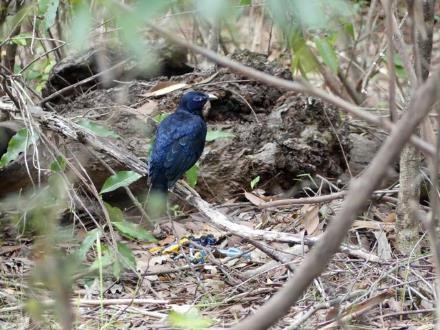
Mr Bowerbird perches proudly above his toy car collection (about 2 m from his bower)
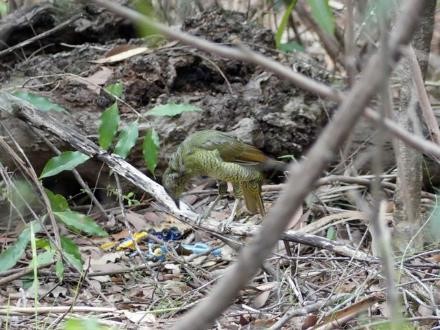
Mrs is not so impressed and thinks he needs some upmarket models – maybe a toy Lamborghini?
I found it difficult to get a good description of an actual nest, either on-line or in bird books, but the WIRES site says the female alone builds and lays in a nest 10 to 15 m up in a tree, and raises the young, while the male goes on and courts other females in his bower. I'll scan the trees for a nest next time I'm out there.
I think one can be sure that this ‘female’ is truly a female, but a young male's colouring is apparently similar and it only turns satin blue-black at 5 to 7 years old, so if you see a stray ‘female’ around, as you often do, then it could easily be a young of either sex.
I'm always blown away by the violet-coloured eye, particularly against the green background of the female, though these pictures don't do it justice.
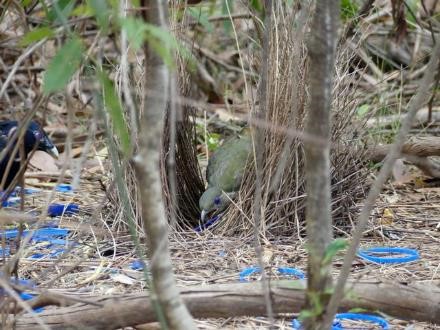
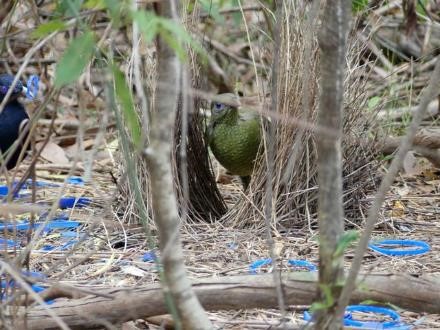
I think Mrs is tidying up while Mr wants to add even more blue plastic and make an even bigger display (mess?)
Michele Cooper leaves LCNP
The last two issues of STEP Matters (Our National Parks Need Protection and Fifty Years of the NPWS but is Anyone Celebrating?) have described the savage treatment being applied by the NSW government by cutting national parks funding and staff restructuring. This is despite a huge increase in the popularity of parks revealed in a regular survey undertaken by the NPWS. Since 2014 the number of visits to NSW national parks by Australian residents has increased from 39.1 million to 51.8 million, a massive 32% in just two years.
The significance of the restructuring policy has been brought home by the loss of Michele Cooper who has been Lane Cove Valleys Area Manager for five years. This profile of Michele has been written by Tony Butteriss, President of the Friends of Lane Cove Valley.
Friends is very disappointed to hear that Michele Cooper has not been reappointed to her role in the restructure of NSW National Parks and Wildlife Service. We will miss her professionalism, advice and personality. We wish Michele the most for her future and as she said recently, ‘we have so much more to do and achieve, I want another 50 years’.
Outgoing Area Manager, Michele Cooper came from an interesting background. She arrived at Lane Cove River Area as a ranger in 2001. Her degree is in physical geography with a master in limestone cave management but she insists she gained her skills on the job. She managed the Pennant Hills additions, Dalrymple Hay Nature Reserve (her favourite spot) and the Kukundi Wildlife Shelter.
The value of Lane Cove National Park – according to Michele – is in having pockets of bushland within a massive metropolitan city. She values her staff and the volunteers that are dedicated to environmental work. Her typical workday is diverse, needing her attention across a range of tasks: a school group wanting a tour ... what spider is this … can I run an event with 3,000 people … a tree fallen over a track … where can I go camping? And of course – bush fires.
Her special achievement at NPWS was her Aboriginal Tour Guide Training Manual. It trained Aboriginal people to give tours in national parks. After she led the first training program, TAFE and NPWS ran numerous courses using the manual. Since then some land councils have used her manual to set up tour guide businesses.
Before Michele joined NPWS, she taught whale rescue skills to NPWS staff at the Quarantine Station on North Head. She got on so well with staff that they asked if she would volunteer. She joined NPWS doing fauna surveys in western NSW in the mid-1990s. Her next job was gate-collector for Ku-ring-gai Chase National Park. She returned to western NSW for 10 years conducting fauna surveys off-park on lands that were viable for adding to the reserve system. In Sydney, Michele was a ranger and also regions community relations officer before becoming area manager for Lane Cove. We have just lost a manager with over 25 years of highly commendable work with NPWS.
Vale Harold Spies, Founding Member of WEPA
It is with great sadness that Willoughby Environmental Protection Association (WEPA) reports the peaceful passing of long-term member, Harold Spies, in Castlecrag on 18 December at the age of 97.
Harold was a founding member of WEPA and active on its executive for over 35 years. In that time he provided inspiration and sage advice on a wide variety of WEPA policies, campaigns and projects and was always on hand to plan campaigns, write for and produce the newsletter, lead walks, work on bush regeneration projects and to man WEPA’s many stalls.
WEPA was formed in 1982 by a group of local residents concerned about the quality and management of the environment. WEPA works for the protection and improvement of Willoughby’s environment through effective planning, management and maintenance, both locally and beyond. Their activities include regular talks, bush restoration projects, making submissions and holding plant stores.
Final Outcome of Trial of Hunting in National Parks
It seems a long time ago when the NSW public were fighting an attempt in 2013 by the Shooters and Fishers Party, supported by the NSW government, to allow amateur hunters into national parks. Hunting has been permitted in state forests since 2002 but there was much more at stake with national parks. There was strong opposition on many grounds particularly its effectiveness in removing feral animals.
Ultimately the government decided to scale back the proposal and do some proper research on ground shooting as a method of controlling feral animal populations. In 2014 it instituted a trial of hunting in six park areas mostly in central and western NSW that contained threatened species and ecological communities. The trials were to be scheduled and managed by the NPWS.
The final report by the Natural Resources Commission into the trial of the so-called Supplementary Pest Control (SPC) was released in February 2017.
The SPC trial has shown that using appropriately trained and capable volunteer ground shooters can deliver positive pest management outcomes and social benefits, such as improved relationships and communication between NPWS and their neighbours. The trial has also demonstrated that volunteer ground shooting can be done safely and humanely when sufficient risk management, supervision and planning are undertaken. The Commission has concluded that volunteer ground shooting has the potential to be an effective supplementary pest control technique in the state’s national parks and other reserves, if used as part of an integrated pest management program under controlled conditions.
The Commission recommended that the SPC program be continued with it being strategically applied where it can provide most benefit as part of an integrated pest management program. The Commission also recommended that additional funding be allocated separate from NPWS core pest management budget. A happy ending to a sorry saga.
Appeal to Stop Development that will Destroy the Bayview Wildlife Corridor
 Northern Beaches Council is currently considering a development application that has been submitted to build 95 seniors housing units, three to four storeys high in seven buildings on open space land at Bayview Golf Course. Construction will lead to the chopping down of more than 100 trees that are the core of a High Priority Coastal and Wildlife Corridor.
Northern Beaches Council is currently considering a development application that has been submitted to build 95 seniors housing units, three to four storeys high in seven buildings on open space land at Bayview Golf Course. Construction will lead to the chopping down of more than 100 trees that are the core of a High Priority Coastal and Wildlife Corridor.
The corridor allows wildlife movement between the coast at Winnererremy Bay, Mona Vale and major habitat areas around Katandra Bushland Sanctuary and Nangana Road, Bayview. It is habitat for threatened and vulnerable species including a pair of Powerful Owls, glossy black cockatoos and a colonies of microbats and the Bent Wing Bat.
Under the Planning Policy for senior’s housing development a site compatibility certificate (SCC) is required to be issued by the Department of Planning before the development application can proceed. It confirms that the development is broadly compatible with the surrounding environment and locality. The department must consider a series of criteria covering environmental, resources, servicing and infrastructure and local impacts before making a decision.
A previous SCC application made in January 2015 was knocked back by the department on the grounds that:
- the height and scale are out of character with surrounding residential character
- the site is flood prone land and no evidence has been provided that the development will not adversely affect surrounding land uses
- there are significant environmental implications for existing flora and fauna including threatened species and adjacent wildlife corridor.
The same SCC application was submitted in April 2017 and this time it was approved.
A report on restoring habitat for threatened species has recently been completed. The report found that vegetation patch area and wildlife corridors have the strongest positive effects on biodiversity when complemented by vegetation structure. Large sites greater than 30 ha are necessary to prevent a rapid loss of area-sensitive species.
Update on Hills Council Plans for IBM Site
STEP Matters issue 193 provided detail on the application by Mirvac to build 600 apartments in the former IBM business site next to Cumberland State Forest. In addition to the IBM site Mirvac owns a large land area that currently contains high quality bushland.
Hills Shire Council applied to the Department of Planning for a Gateway Determination to allow rezoning of the bushland part of the 28 ha site for R4, high density. The department issued the Gateway Determination on 31 October telling the council to do more homework and amend the zoning plan to provide protection of the high value vegetation.
Lo and behold, Hills Council then wrote a letter to the department on 12 December 2017 requesting an amendment to the Gateway Determination to permit zoning of the high quality bushland as E3, Environmental Management. This would allow the area to be subdivided into 2 ha lots with the associated need to bushfire protection zones, roads, water supply, etc all leading to the destruction of endangered ecological community and threatened species habitat.
Mirvac has advised in writing that they want the area zoned as E2, Environment Conservation, and they are not seeking to impose the cost of this protection on the council. So all the community groups opposed to the development are at a loss to understand why council applied for E3.
Council has also applied for special conditions in the DCP for just this site that are different from the rest of the Hills Council LEP. It also requests the removal of the 2.5 ha recreation zone, saying it could create public open space. Why not commit to providing open space that will be essential for the new residents?
They have requested approval for site specific provisions which would enable a single developer, Mirvac, to build a completely ‘new type of housing’ which has been built nowhere else in the Hills Shire, on 86 m2 blocks, in a zoning which provides for 700 m2 lots.
We await the next decision by the department. Go to www.forestindanger.org.au for the latest news and how to make a submission to council or the Department of Planning.
Is the Federal Government Really Concerned about Biodiversity?
The Australian government has a framework of strategies and programs for the management of biodiversity. According to the Department of Environment and Energy, Australia’s Biodiversity Conservation Strategy 2010–2030 guides how governments, the community, industry and scientists manage and protect Australia's plants, animals and ecosystems.
The recent review of the strategy is puzzling. A well-defined program seems to have been thrown out the window in its implementation but some parts of it are working well such as the Threatened Species Action program.
The Australian Conservation Foundation and WWF Australia recently released their joint submission on the 2018–19 budget. This revealed that the Australian government has slashed environment spending by one-third since 2013. This cut in spending is one of the reasons for the sorry record in maintaining biodiversity.
State of the Environment reports document the extent of the problem. For example, between 2011 and 2015, there was a 66% increase in the number of critically endangered animals (from 38 in 2011 to 63 in 2015) and a 28% increase in critically endangered plants (112 in 2011; 143 in 2015). By critically endangered, we mean that extinction is a real possibility in the short term for these species. Immediate action is needed if we are to avoid terminating millions of years of independent evolution, as these biological lineages die out.
2010 Biodiversity Strategy
The Australian government first developed a biodiversity strategy in 1996. An update was made in 2010. It is intended to provide a guiding framework for all levels of government to conserve our national biodiversity over the next 20 years.
The document is comprehensive, comprising 100 pages. It provides an overview of the state of Australia’s biodiversity and outlines collective priorities for conservation. The vision of this strategy is that Australia’s biodiversity is healthy and resilient to threats, and valued both in its own right and for its essential contribution to our existence.
The strategy identifies three national priorities for action to help stop the decline in Australia's biodiversity:
- engaging all Australians in biodiversity conservation
- building ecosystem resilience in a changing climate
- getting measurable results
The strategy contains 10 interim quantified national targets for the first five years.
Five Year Review of the Strategy
A review of the first five years of the strategy was released in 2016.
The review report is very critical of the strategy but to my mind the main reason is that not enough effort has gone into its implementation. For example it is criticised for being long and technical but also for providing inadequate guidance for decision makers to determine how best to direct investment for biodiversity conservation. That detail would have made the document much longer and even more technical. There is confusion in the review between the roles of the strategy and the programs to implement action.
New Strategy – How can they be Serious?
On 25 November 2016, Australian, state and territory environment ministers agreed to revise the 2010 strategy taking into account the findings of the five year review.
Called Australia’s Strategy for Nature 2018–2030: Australia’s Biodiversity Conservation Strategy and Action Inventory, the draft revised strategy is open for public comment until 16 March 2018. Click here to make a submission.
In response to the review the government has thrown out the baby with the bath water. The Department of Environment and Energy’s website states:
The strategy has been revised to improve its ability to drive change in biodiversity management priorities, and its alignment with Australia's international biodiversity commitments.
How can that be? The 100 page document has been replaced by one with 17 pages. There is a complete absence of actions, only statements about what could be done.
Vision
The vision of the new draft is that:
Australia’s nature, now and into the future, is healthy and resilient to threats, and valued both in its own right and for its essential contribution to our health, wellbeing, prosperity and quality of life.
Basically unchanged from the previous strategy.
How much information can be contained in a 17 page document that uses up lots of pages in preambles and background?
The goals are simplistic to say the least; that is:
- to connect people with nature
- to care for nature
- to build and share knowledge
The priorities in meeting these goals as described are all text book stuff. They could be applied to any country. There is nothing specific to Australia’s characteristics and biodiversity situation. As usual with the current governments there is no mention of climate change.
Here are three quotes to give an idea of the lack of specifics:
Objective 3. Increase understanding of the value of nature
Australians understanding of the value of nature, and its role in health and wellbeing can be improved through increasing children’s learning about nature, encouraging organisations and businesses to report their performance against environmental measures, or using environmental accounts to more clearly demonstrate the value of nature.
Objective 8. Use and develop natural resources in an ecologically sustainable way
… Sustainable use and management of natural resources can be achieved through strategic planning and trade-offs between use and protection …
Objective 10. Increase knowledge about nature to make better decisions
There are opportunities to target research to reduce gaps in knowledge and improve management strategies, to support development and implementation of innovative tools and techniques, and to build connections between the environmental disciplines and social sciences …
Is there any Action Guidance?
The draft strategy devotes one whole page to the proposed actions but there is no proposed action. The proposal is for governments to develop an ‘action inventory’, a giant database that will illustrate efforts that ‘contribute to the strategy’s goal and objectives’. The content of this one page then goes on to suggest what information might be included and who might find the inventory useful:
It is a concept for testing and discussion. The online capabilities, content and timelines for an action inventory are yet to be finalised and will be informed by this consultation process.
Threatened Species Action
The biodiversity document is puzzling when there are examples of successful action. In 2015 the government launched a threatened species strategy and promised to make it a priority. The year one report card showed that 21 of the 26 objectives in that report were achieved. The targets and actions were clearly defined and included tackling feral cats and fox-baiting programs. Certain species were identified for action to improve their population numbers and habitat. This contrasts with the overall biodiversity strategy that should be focused on actions that reduce the risks of more species becoming threatened such as land clearing and increasing the reserve system.
The government doesn’t seem to know what to do about our loss of biodiversity or are they just totally disinterested?
Quick Response to Loss of Trees in Hornsby
In the previous issue of STEP Matters we reported on the major loss of trees in Hornsby Shire in recent years and the commissioning of a report by council outlining options to strengthen tree protection measures to re-establish Hornsby’s tree canopy.
In December council put forward a draft amendment to the tree preservation provisions of the Development Control Plan. The amendment, if enacted, would make the tree preservation order similar to the rules that apply in Ku-ring-gai. Council approval would be required for the removal or significant pruning of all trees except listed weed species.
This a major turnaround from the current situation where trees can be removed except if they are on the list of local indigenous species or in a heritage area.
Submissions closed on 26 January. We hope the amendment will be adopted promptly.
Tree Disputes are much the same now as 65 Years Ago
In the last newsletter we highlighted the loss of tree canopy in Hornsby Shire and illustrated the abrupt decrease in tree canopy from Ku-ring-gai Chase National Park to the urban area along Harwood Avenue, Mt Kuring-gai.
An article on page 1 of the Sydney Morning Herald on 24 December 1952 shows emotions ran as high then as they do now.
Dispute over Trees: Gun Threat Charge
Mr John Richardson, 76, a well-known Mt Kuring-gai resident, was charged at Hornsby Petty Sessions yesterday with assaulting Mr AJ Cresswell, the Kuring-gai shire engineer, by threatening him with a gun.
He was remanded until January 9 on £20 bail.
Mr Richardson’s arrest followed a dispute at Kuring-gai yesterday morning when shire council workmen, supervised by Mr Cresswell, were uprooting trees in High Street, near
Mr Richardson’s property.
Mr Richardson, a retired engineer, lives with his family in a large old house, the grounds of which are a show place in the district.
The disputed trees are just outside his property on the corner of High Street and Railway Street, and frame a vista across Cowan Creek Valley.
About nine months ago, after Hornsby council employees had sent bulldozers to clear land further south, local residents protested at the destruction of trees.
Once, ratepayers’ wives stood in front of some to prevent their destruction.
An agreement was eventually reached with the council by which selected trees were spared.
The trees about which yesterday’s dispute arose were saved temporarily by the protests of Mr Richardson and neighbours, who telephoned the shire president, Councillor Somerville. Councillor Somerville assured the residents that the trees would be spared.
There is a sharp division within the community between the ‘pro-tree’ and ‘anti-tree’ elements.
The ‘pro-tree’ element contends that only by sharp vigilance have they prevented Mt Kuring-gai from becoming denuded.
Mr Richardson said last night:
‘A lot of new people are coming to this neighbourhood who want to cut down everything. They are vandals.
‘The trees are being removed to-day give us shelter. They protect us from southerly gales.’
After Mr Richardson had been released on bail, the police offered to drive him home.
Mr Richardson said he preferred to go by rail.
But at Hornsby Station he got on the wrong train – a non-stop train to Gosford. He had to spend several hours there before catching a train back.
https://trove.nla.gov.au/newspaper/article/18296287
This news item was followed by a letter from the Shire President on page 2 of the Herald on Saturday 27 December 1952.
Trees at Hornsby
Sir, The report in Wednesday’s ‘Herald’, headed Dispute Over Trees, did not present the case fairly from Hornsby Council’s point of view.
Some time ago council provided a street light at the intersection of High Street and Railway Street, Mt Kuring-gai, and later undertook some clearing of the roads, having regard to the residential development which has taken place in that locality.
Complaints were received from many of the residents, who in some cases are young folk, that the scrub and undergrowth at this point presented a hazard at night, first in that it prevented the street light from efficiently illuminating the intersection referred to, and secondly, provided a harbourage for any undesirables.
As president of the shire, I instructed the Electrical Engineer Manager to personally supervise the tidying up of this corner and to remove only any under scrub and rubbish which helped to obscure the light. The statement attributed to me that I said ‘the trees would be spared’ is not in accordance with fact. My statement was that only those trees or undergrowth which it was found absolutely necessary were to be taken out. No trees whatever of any dimension nor of any beauty were interfered with.
Hornsby Council over the years has been most tree conscious and has many miles of roads and streets, and also parks within its boundaries planted with trees which are now reaching maturity, and during the current year carried out tree planting for a total length of over one mile. It has always been council’s policy to retain trees to the fullest extent even when road construction works and the extension of electric light and telephone services are proceeding, and in cases where removal of some trees has been absolutely essential others have been planted in close proximity to replace them.
C.H. Somerville, Shire President, Shire of Hornsby
https://trove.nla.gov.au/newspaper/article/18296440
The fight was all in vain as shown in the aerial photos below and above.
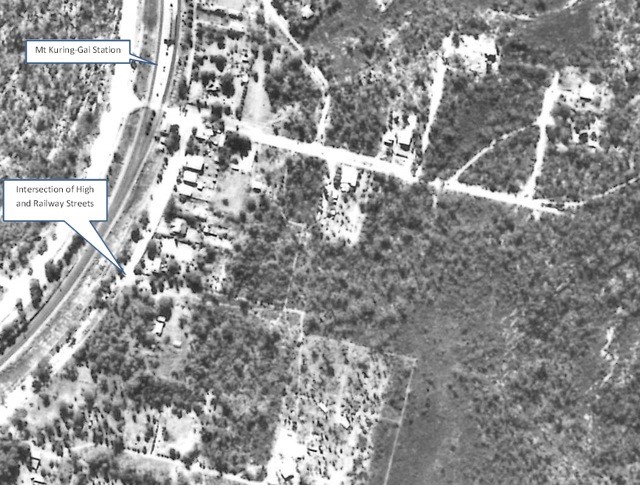
Mt Kuring-Gai 11 years before this dispute (1941). Many trees are present at this intersection and across the eastern side of Mt Kuring-gai. The individual tree canopies are small and presumably indigenous trees such as Eucalyptus haemastoma (Scribbly Gum) various Stringybarks and Corymbia gummifera (Red Bloodwood). 4138 Map 1310 156-5/417 Broken Bay Run 12 1941.
The photo at the top of the page illustrates how the fight to save these trees was all in vain as during the 1970s this intersection was removed for construction of the M1. In 2017 there appears to be generally fewer trees but with larger canopies than in 1941. Aerial view from SIX Maps, accessed 2017.
Robin Buchanan wrote this item. She must have a very good filing system to be able to find the newspaper cuttings!
Going to Ground: How used Coffee Beans can help your Garden and your Health
Did you know that your morning cup of coffee contributes to six million tonnes of spent coffee grounds going to landfill every year? This does not have to be the fate of your caffeine addiction and there are many opportunities to up-cycle spent coffee grounds into valuable commodities.
From fresh fruit, to roasted bean, to used up grounds, coffee’s chemical composition offers a range of uses beyond making your daily brew.
Potential applications range from biofuels, to health products, and fertiliser for farms or your garden. So why are we throwing this precious product away?
The answer is that processing and production can be more complex than you might imagine – even when we’re talking about simply using coffee grounds in your garden. What’s more, many recycling initiatives to turn waste coffee into valuable commodities are still in their early stages.

You may have noticed that some cafes now offer free spent coffee grounds for customers to take home and use in the garden. In theory, this is a great initiative but the reality is that fresh coffee grounds are high in caffeine, chlorogenic acid and tannins that are beneficial to humans but toxic to plants.
The spent coffee must be detoxified by composting for a minimum of 98 days for plants to benefit from the potassium and nitrogen contained in the roasted beans. Without adequate composting, the benefits are scant (see below). So if you do take some coffee grounds home from your local cafe, make sure you compost them before sprinkling them on the veggie patch.
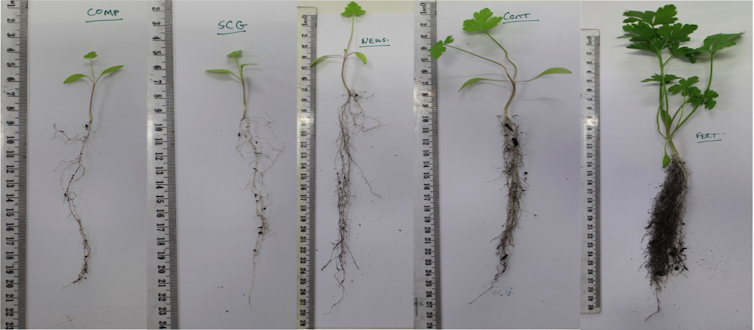
The good news is that properly composted coffee grounds offer a cheap alternative to agro-industrial fertilisers, potentially helping urban communities become greener and more sustainable. Savvy businesses have begun processing coffee grounds on a commercial scale, turning them into nutrient-rich fertilisers or soil conditioners in convenient pellets for use in the garden.
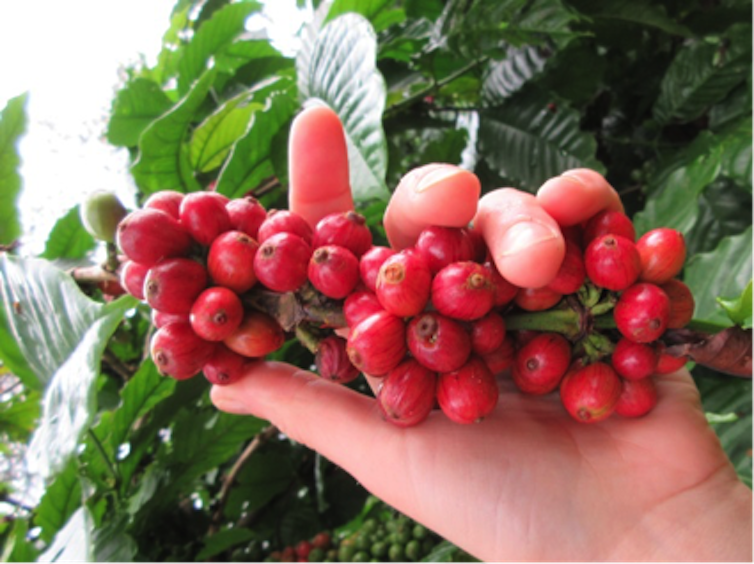
But why stop there? A potentially even more valuable ingredient is the chlorogenic acid. Although toxic to plants, as mentioned above, chlorogenic acid has potential as a natural health supplement for humans, because of its antioxidant, anticancer and neuroprotective properties.
The whole coffee production process is abundant in chlorogenic acid, particularly in raw coffee beans. Chlorogenic acid conversion efficiency is even better from green coffee pulp, with a 50% recovery rate, compared with 19% for spent coffee grounds.
As undersized and imperfect beans are discarded at this raw stage, many businesses have seized the opportunity to market green coffee extracts as a weight loss product, although more research is needed to confirm this potential.
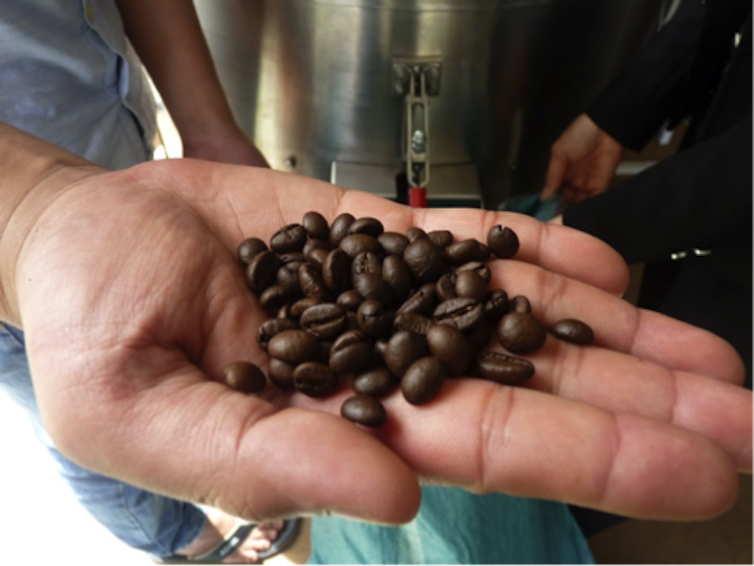
The list doesn’t end there. Coffee waste can be used to create a diverse list of chemicals, including enzymes and hormones for digestion of common biological compounds and to improve plant growth; and feedstocks for high-end crops such as mushrooms. Coffee oil has even been trialled as a fuel for London buses.
![]() With abundant waste supplies due to the popularity of coffee consumption, by recycling the byproducts, perhaps we can enjoy one of our favourite beverages without too much guilt.
With abundant waste supplies due to the popularity of coffee consumption, by recycling the byproducts, perhaps we can enjoy one of our favourite beverages without too much guilt.
Tien Huynh, Senior Lecturer in the School of Sciences, RMIT University
This article was originally published on The Conversation. Read the original article.
Talking Energy, a Summer Barbeque Guide
Here are five common Australian energy myths and facts for the next barbeque when these questions about renewable energy are raised. The information comes from the Climate Council.
Myth 1: What happens when the sun doesn’t shine and the wind doesn’t blow?
Fact: Renewable energy and storage can provide electricity 24/7
Renewable electricity can power the economy through a mix of wind and solar energy, together with on-demand renewables (such as solar thermal, biomass or hydro power) and energy storage (such as pumped hydro or batteries). Improved energy efficiency and demand response, such as installing modern appliances and ensuring these appliances are not running when electricity demand is high, can also help make the grid more reliable.
Myth 2: Coal is reliable
Fact: Ageing coal generators are unreliable and vulnerable to heatwaves
The Australian Energy Market Operator (AEMO) has identified ageing coal power stations as a risk to reliable electricity supply. By 2030, most of Australia’s coal fired power stations will be over 40 years old. Once the coal fleet reaches this age, they become increasingly expensive to run, and increasingly unreliable particularly during heat waves.
This is a major management problem for AEMO. The aged Liddell power station in the Hunter Valley whose life the Turnbull government wants to extend has had multiple turbine breakdowns this summer. Each unit is large so a breakdown has a significant impact on the total power available.
Myth 3: Renewable energy is driving up electricity prices
Fact: Renewable energy is the cheapest form of new power
New renewable energy is driving down electricity prices by increasing electricity supply. Australia’s coal power stations are reaching the end of their lives and need replacing. Renewable power from wind and solar farms is the cheapest form of new power generation and is best suited to replace these old clunkers. More than 1.6 million Australian households are reducing their electricity bills with rooftop solar.
Myth 4: Renewable energy causes power outages
Fact: Most blackouts are caused by events affecting power lines
99% of all interruptions to power supply, including blackouts, are caused by events affecting power lines – not a lack of sufficient generation. Common causes of blackouts include fallen tree limbs, possums, vehicle impacts, bushfires, lightning strikes and storms. And to make matters worse, climate change – driven by the burning of coal, oil and gas for electricity – is worsening many extreme weather events such as storms, heatwaves and bushfire weather.
Myth 5: Australia lacks leadership on renewable energy
Fact: states and territories are leading on renewable energy in the absence of credible federal policy
While Australia waits for a credible climate and energy policy from the Australian government, states and territories continue to lead the charge on ramping up renewable energy and cutting pollution.


